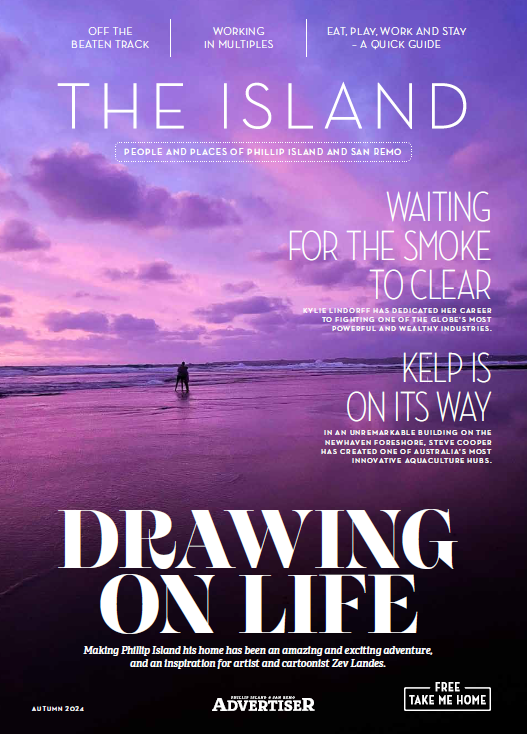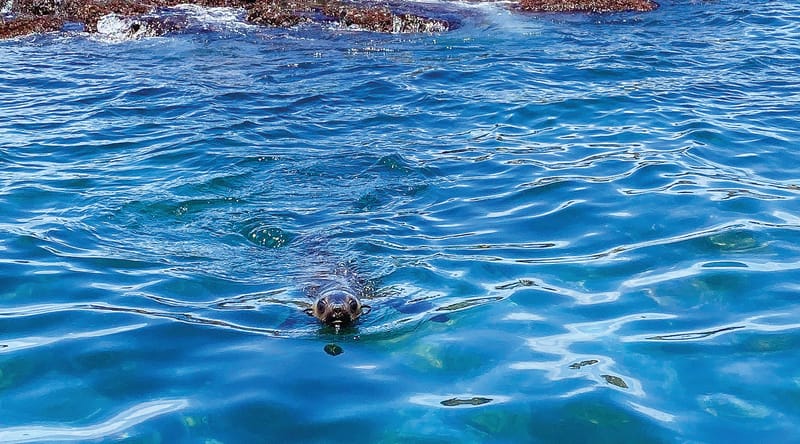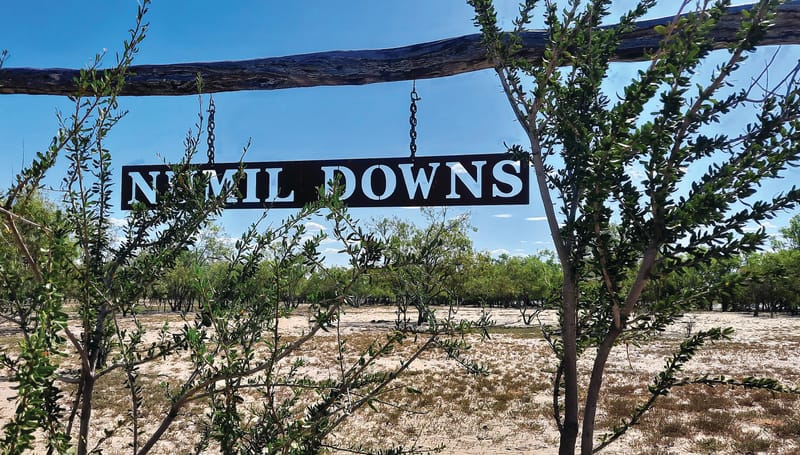Diving in, deeply
Kade Mills has dived all along the east coast of Australia, but says the waters surrounding Phillip Island are among his favourites.
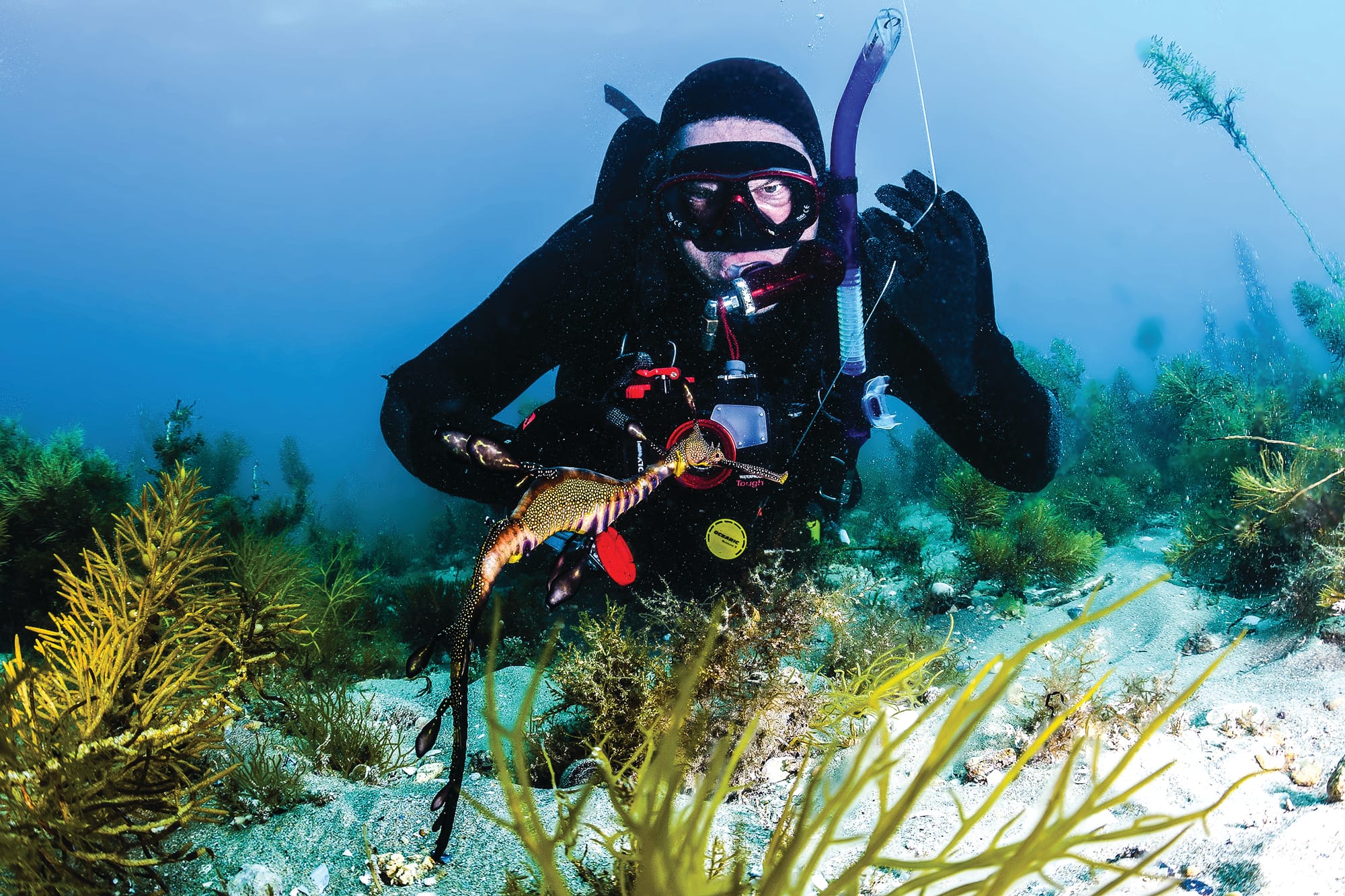
Ventnor’s Kade Mills has dived in crocodile-infested waters off Darwin and all along the east coast of Australia, but says the waters surrounding Phillip Island are among his favourites.
He has seen vast swathes of eastern Australia’s underwater world, including scientific monitoring of recreational abalone and snapper fishing.
And the deepest he has dived was 60 metres under the waves off the Solomon Islands. “That was in a World War II wreck and because it was so deep it was like a moment frozen in time. There were human remains on the deck and machine guns with spent bullets,” the 46-year-old diver says. “It was like an underwater museum.”
But as extensive as his 3000 diving hours are, the waters surrounding Phillip Island are among his favourites. Kade has been showcasing the island’s ocean and bay in his role with the Victorian National Parks Association (VNPA).
On December 3-4 he ran a Great Victoria Fish Count event at Kitty Miller Bay, part of the VNPA’s annual count, which is in its 20th year and runs for five weeks with events around the state. The count saw divers buddy up, looking for 35 common species such as morwong, leather jackets and blue-throated wrasse.
Earlier this year for a fortnight Kade also ran a Victorian Sea Slug Count off San Remo, along with fellow divers counting nudis, or nudibranchs, slugs described by scientists as having some of the most fascinating shapes, colours and patterns of any animal.
“There is one species of nudi off San Remo that is a beautiful pink and is camouflaged because it is found on a pink sponge,” Kade says. “There is one green that eats seaweed and stores it on its back like solar panels, to provide energy. The slug count is like a treasure hunt. They are hard to find but the more you look for them you get rewarded for your persistence.”
Kade says he willingly dons wetsuit, snorkel or scuba gear – whether for work or play – to highlight the majesty of the underwater world. “It’s hard to care for something if you don’t know it’s there. When you go snorkelling in the fish count, for instance, it’s something people don’t forget. The fact you’re putting yourself in this ridiculous outfit, waddling around like a duck, maybe getting cold, but seeing things you’ve never seen before, that’s quite powerful. It leaves an impression on people and they see ‘look we have this and it’s something we should care about’.”
Kade says the citizen science work is also about contributing to scientific knowledge, with all the data from the fish and slug counts, for example, going into a larger database. “That database is then used by policy makers to help make decisions, and is a resource for future generations. We know a lot about birds and koalas but by comparison little is known about the underwater world.”
For example, when a marina was mooted to be built off San Remo several decades ago, it was the knowledge of the nudi community there that stopped it. More than 90 species of nudis have been found in a triangle section of intertidal foreshore off San Remo, he explains, which is protected by the Flora and Fauna Guarantee Act.
Recently Regional Roads Victoria has proposed widening the Phillip Island Road at San Remo, which would include reclaiming the foreshore area next to the nudi colony. “We don’t know if the San Remo nudi population is the biggest or the best,” Kade says. “There’s so little we know about this species and that’s why the count is so important, because it forms a baseline.”
Kade actually considers himself more of a surfer than a dive enthusiast. Growing up in Geelong, he surfed from the age of 13.
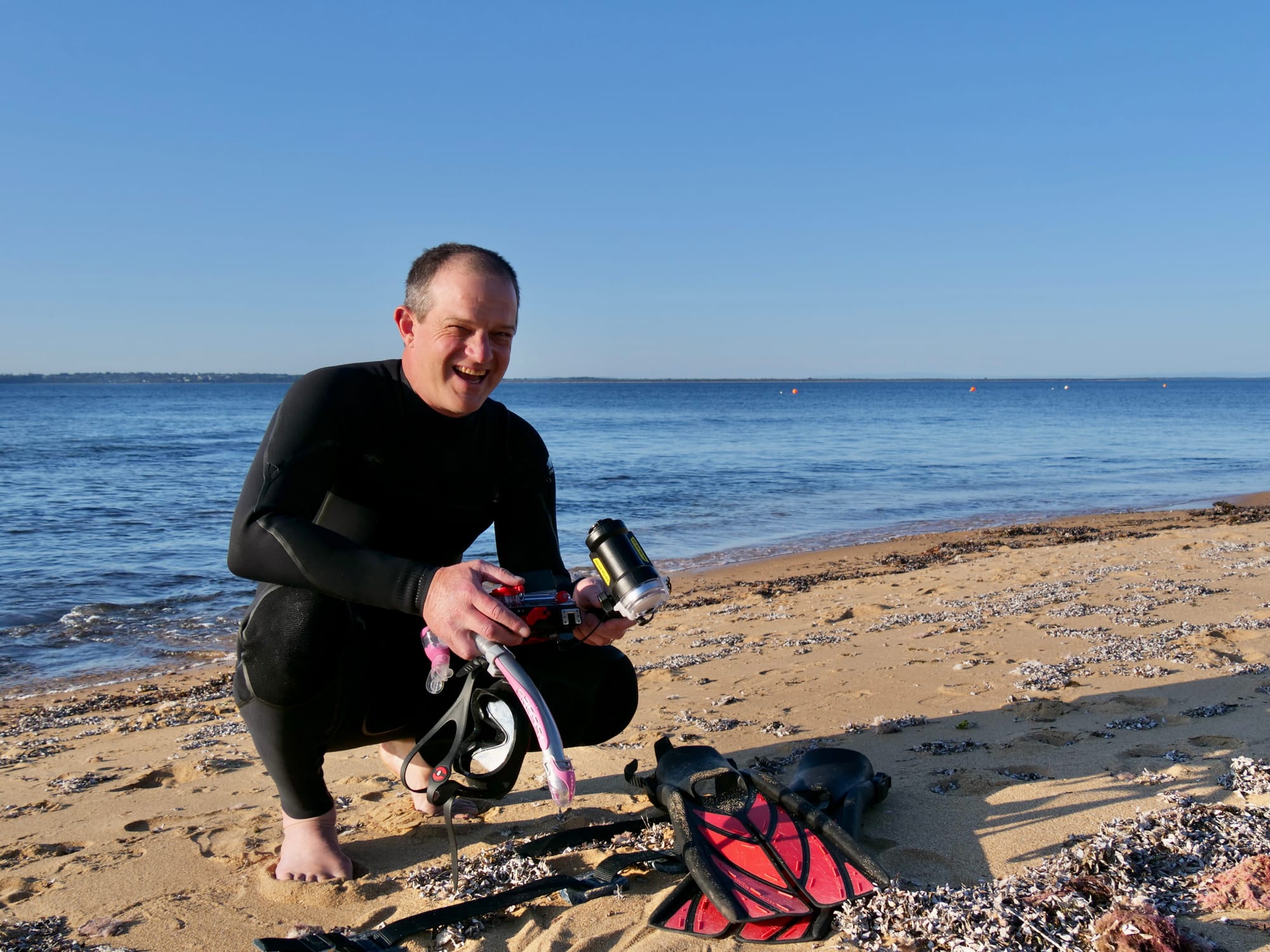
After he studied natural resource management at Deakin he worked for five years at Sydney University exploring the ecological impact of coastal cities and on weekends worked as a dive instructor. “Diving started as a hobby but then I got more intrigued. I loved teaching people, pointing out seahorses or nudis and getting back on land and talking about it.”
For three years Kade then worked as an environmental consultant, “spending a huge amount of time in the water, at one stage diving most of the headlands of NSW’s coast” counting abalone and estimating grey nurse shark populations. Kade has worked as a science diver off Darwin for a gas project, monitored albatross off Lakes Entrance and even surfed off New York, where his then girlfriend (now wife) Kerri grew up.
One of his most formative jobs was six years at Fisheries, as a research scientist based at Queenscliff, a role that exposed him to recreational fishing issues, including the health of the snapper population. He and the team would catch juveniles in Port Phillip Bay and – using lasers – analyse the fish ear bones, “which can tell a lot of information including age and where they were born”.
Kade says the scientific work was critical to monitor the health of the recreational fishing industry and since he worked there the team of 60 scientists has now been cut to about 10. “Fisheries has let a lot of people in research go and they are now a fish authority not about marine research. I would like to see more monitoring done. It’s not about locking up areas – I don’t have a problem with recreational fishing – but there should be more capacity for research to ensure the fisheries are there for anglers, their kids and grandkids, which is what any fisherman wants too.”
Kade joined VNPA six years ago, moving to Ventnor last year, and says his focus is now on engaging the community to care about marine issues. “There’s a thirst for information out there. People want to know about the environment, but they don’t know where to start.
“I’m good at saying I don’t know all the answers to questions but this is who does. My role is more like a conduit. Even now I’m not confident about marine life. The more I know the more I realise the less I know.”
Nature loving on land is a little easier, he confesses, than underwater. For those nervous about taking their first tentative steps into the deep blue, an event such as the fish count comes with the safety of camaraderie.
“Diving is a big commitment, snorkelling not such a big thing. But if people still feel anxious joining a group gives them a taste. Part of the appeal for some people is that it’s a challenge. You need a bit of courage, strength and tenacity. A snorkelling group in Melbourne pre-Covid had 2000 members and post-Covid it has jumped to 7600. People are wanting to discover their backyards.”
He says it’s incorrect that tropical waters are more beautiful for diving than Victorian waters. “Coral reefs are what most people know because that is what is presented in the media. Tropical waters may be easier because of the water temperature but off Victoria the colour and diversity of marine life is just as beautiful. Some algae have an iridescent sheen. Sponges are phenomenal, some like hands and fingers, others like cups and saucers.”
Kade adds that wetsuit technology has improved to beat the cold, although some people choose to be seasonal snorkellers in warm weather.
In all his years of diving, not once has he encountered a white pointer or felt in danger. “That’s not to say white pointers have never been near me, it’s just that I haven’t seen them. I’m relaxed under the water. I can be anxious on the surface but once I dive it’s very Zen. My breathing calms, I’m weightless, gravity disappears.
“Everything is an adventure, different, new and novel. It’s just a joy.”



